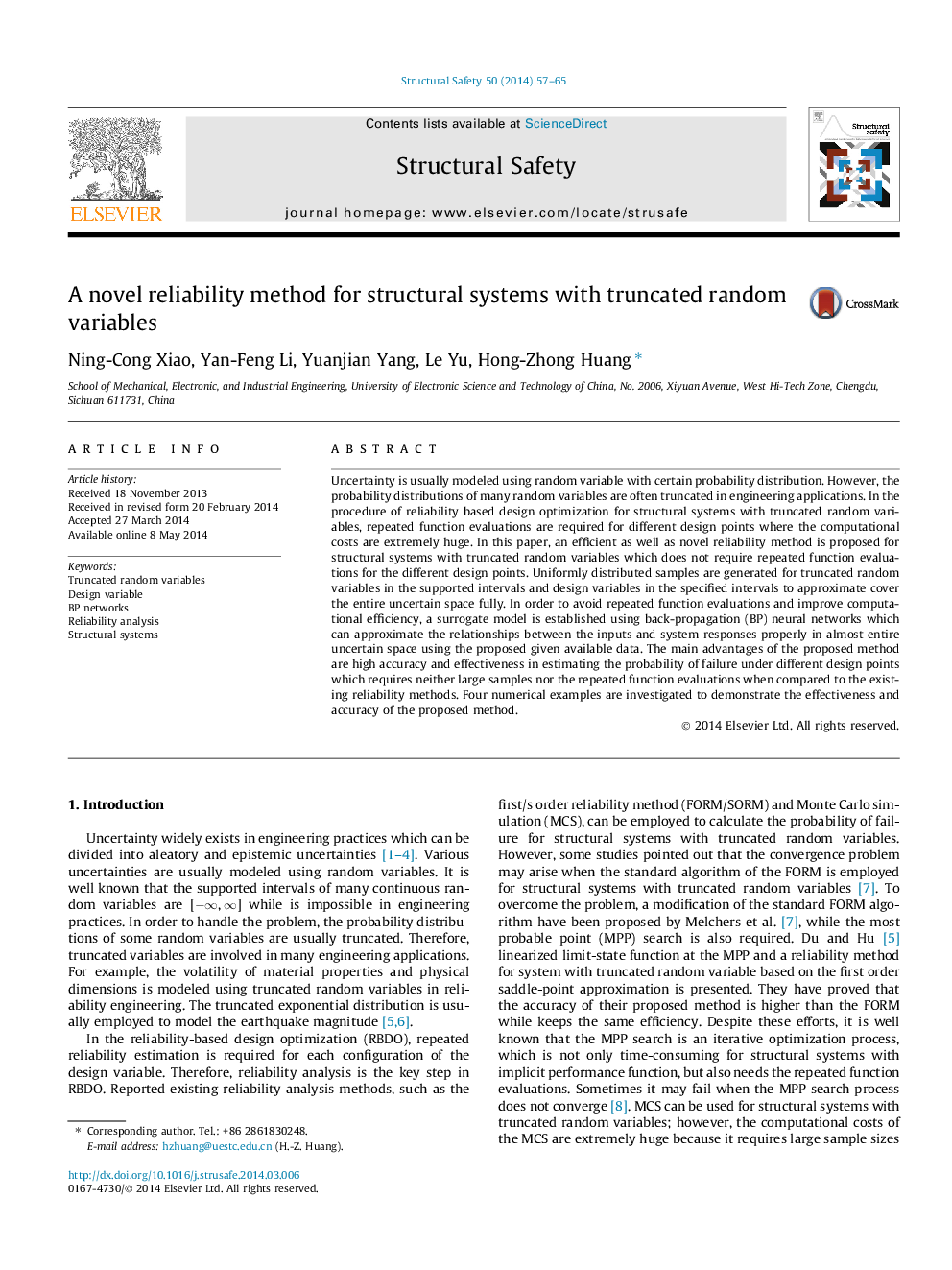| Article ID | Journal | Published Year | Pages | File Type |
|---|---|---|---|---|
| 307538 | Structural Safety | 2014 | 9 Pages |
•The probability distributions of many random variables are often truncated in engineering.•We proposed an efficient reliability method for structural systems with truncated random variables.•The proposed method requires neither large samples nor the repeated function evaluations.•The proposed method is robustness for structural reliability evolutions.•The proposed method provides a solution to the trade-off between accuracy and efficiency.
Uncertainty is usually modeled using random variable with certain probability distribution. However, the probability distributions of many random variables are often truncated in engineering applications. In the procedure of reliability based design optimization for structural systems with truncated random variables, repeated function evaluations are required for different design points where the computational costs are extremely huge. In this paper, an efficient as well as novel reliability method is proposed for structural systems with truncated random variables which does not require repeated function evaluations for the different design points. Uniformly distributed samples are generated for truncated random variables in the supported intervals and design variables in the specified intervals to approximate cover the entire uncertain space fully. In order to avoid repeated function evaluations and improve computational efficiency, a surrogate model is established using back-propagation (BP) neural networks which can approximate the relationships between the inputs and system responses properly in almost entire uncertain space using the proposed given available data. The main advantages of the proposed method are high accuracy and effectiveness in estimating the probability of failure under different design points which requires neither large samples nor the repeated function evaluations when compared to the existing reliability methods. Four numerical examples are investigated to demonstrate the effectiveness and accuracy of the proposed method.
